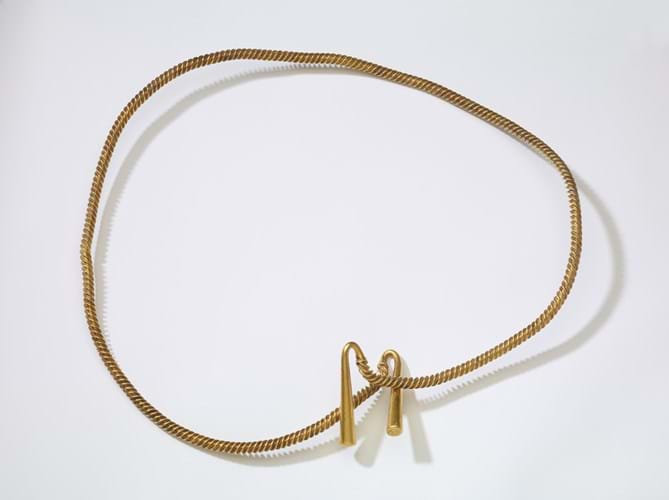
The torc, dating from 1100 to 1300 BC, is being valued before local museums in Cambridgeshire are given the chance to raise funds to buy the rare object.
A metal detectorist found the torc in a field, after seeking permission from the landowner, and brought it to the local Cambridgeshire finds liaison officer, Helen Fowler. “It is one of the biggest found in Britain and Ireland, she said.
“When I first saw it one of my main concerns was how would I be able to weigh it and how would I get it back to my office as it was so large.”
Torcs were normally worn around the neck or arm, but this one, weighing 732g and with a diameter of 49in (1.25m) is too large to fit an average person's waist.
Fowler said it may have been designed to be worn over thick winter clothing, as a sash, or by an animal awaiting sacrifice.
The torc is currently being kept at the British Museum and is being valued before prospective museums can make a bid. Ely Museum, as the nearest museum to the find, has priority to try to raise the funds to purchase it. If it cannot do so the Museum of Archaeology and Anthropology of University of Cambridge will be given the chance. The British Museum is third in line.
Middle Bronze Age
The torc is four-flange twisted bar of Middle Bronze Age date. The British Museum said more work is needed to “understand the precise details of this East Cambridgeshire torc in particular, and flange twisted gold torcs in general”.
Once a value has been assigned to the object and a sale made, the proceeds will be divided between the finder and the landowner.
Fowler said the “best practice” for those seeking treasure is to get “permission from the landowner and have liability insurance”.
The torc is among a number of treasures uncovered by the public in the past year.
More than 1.2 million finds have been recorded by the Portable Antiquities Scheme, managed by the British Museum with local and national partners, since 1997.





